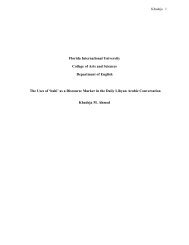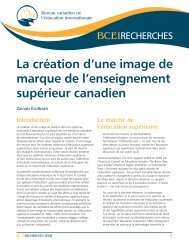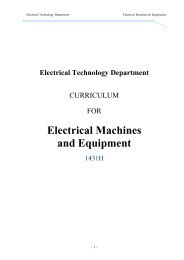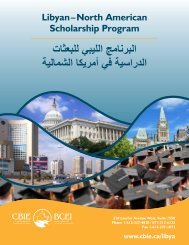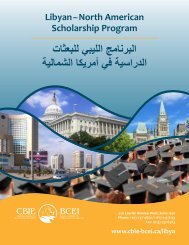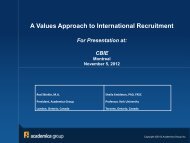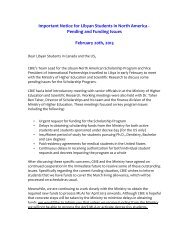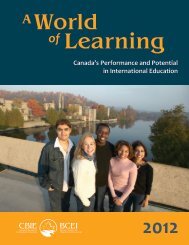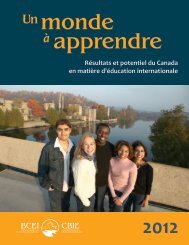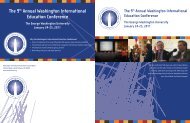Creating a New Historical Perspective: EU and the Wider World ...
Creating a New Historical Perspective: EU and the Wider World ...
Creating a New Historical Perspective: EU and the Wider World ...
Create successful ePaper yourself
Turn your PDF publications into a flip-book with our unique Google optimized e-Paper software.
moments. For example, competence 29, “Ability to comment, annotate or edit<br />
texts <strong>and</strong> documents correctly, according to <strong>the</strong> critical canons of <strong>the</strong> discipline” is<br />
considered more important for second cycle students, although in some courses of<br />
study (a first cycle degree that prepares for <strong>the</strong> publishing industry or for work in<br />
local archives) it might be considered useful at <strong>the</strong> end of a first cycle programme.<br />
The first step in curriculum design is <strong>the</strong> definition of <strong>the</strong> final learning outcome<br />
– required <strong>and</strong> desired – appropriate to <strong>the</strong> degree profile of <strong>the</strong> qualification to<br />
be awarded (<strong>the</strong> “educational outcome”). This outcome is to be formulated in<br />
terms of competences, subject specific <strong>and</strong> generic. Subsequently, in designing <strong>the</strong><br />
many modules or course units which will lead to that final result, through activities<br />
which will require a specified number of hours of student workload measured<br />
in ECTS credits, it will be necessary to focus, for each course unit, on a certain<br />
number of key competences.<br />
In practice, each actual course unit will form several or even many competences.<br />
This means that competences will normally be obtained in clusters, ra<strong>the</strong>r than<br />
one by one.<br />
Since certain approaches to learning/teaching <strong>and</strong> assessment are most appropriate<br />
for forming certain subject specific competences (<strong>and</strong> certain generic<br />
competences), it follows that a variety of approaches to learning/teaching <strong>and</strong><br />
assessment will be useful in order to form a broad range of competences, <strong>and</strong> also<br />
to provide students, with <strong>the</strong>ir individual abilities <strong>and</strong> propensities, with a range<br />
of possible ways of acquiring <strong>the</strong> necessary competences.<br />
In order to explore <strong>the</strong> ways that different institutions currently form subject<br />
specific competences (or <strong>the</strong> ways that <strong>the</strong>y could be formed in <strong>the</strong> future), <strong>and</strong><br />
to exchange information about <strong>the</strong>m, <strong>the</strong> History Group chose 15 of <strong>the</strong> 30<br />
competences, <strong>and</strong> examined <strong>the</strong>m comparatively <strong>and</strong> analytically. Two members<br />
of <strong>the</strong> Subject Area Group described each of <strong>the</strong> chosen competences, looking<br />
at how <strong>the</strong> competence is understood, what learning <strong>and</strong> teaching approaches<br />
are used (or could be used) in <strong>the</strong>ir institution to enhance it, what assessment<br />
methods are (or could be used) to evaluate students’ achievement <strong>and</strong> how <strong>the</strong><br />
students <strong>the</strong>mselves perceive <strong>the</strong> competence <strong>and</strong> how <strong>the</strong>y can be sure <strong>the</strong>y<br />
have obtained it.<br />
The results are discussed below <strong>and</strong> summarised in table form. Of course <strong>the</strong><br />
fifteen do not comprise <strong>the</strong> entire range of competences that any single student<br />
will actually need.<br />
30



